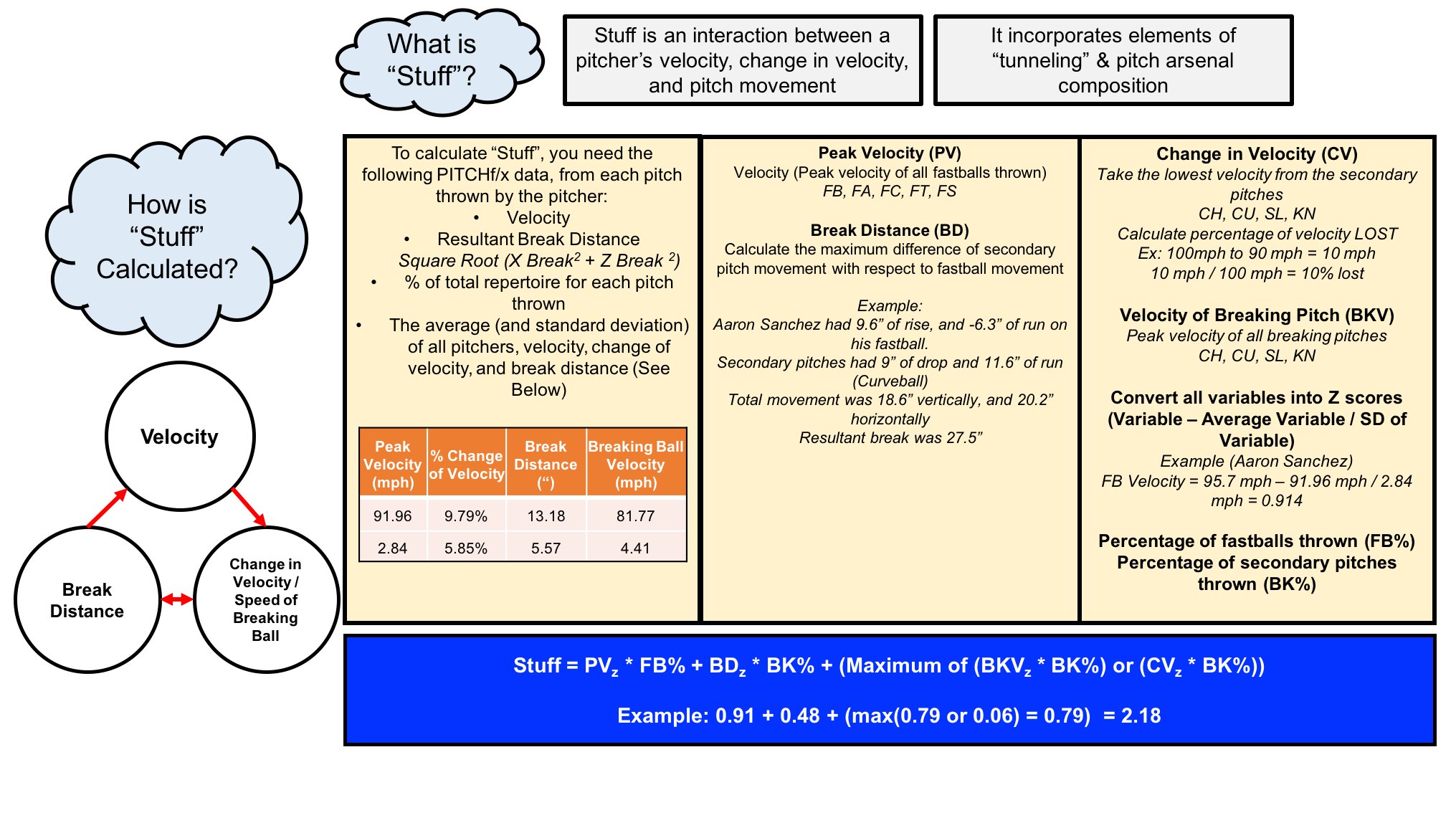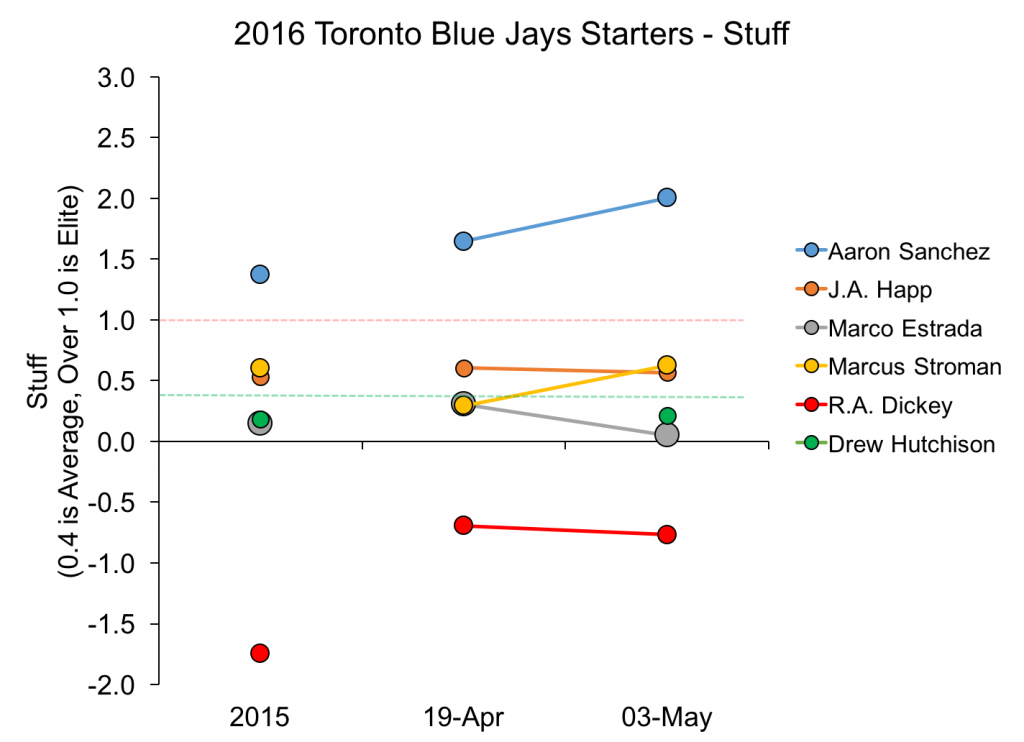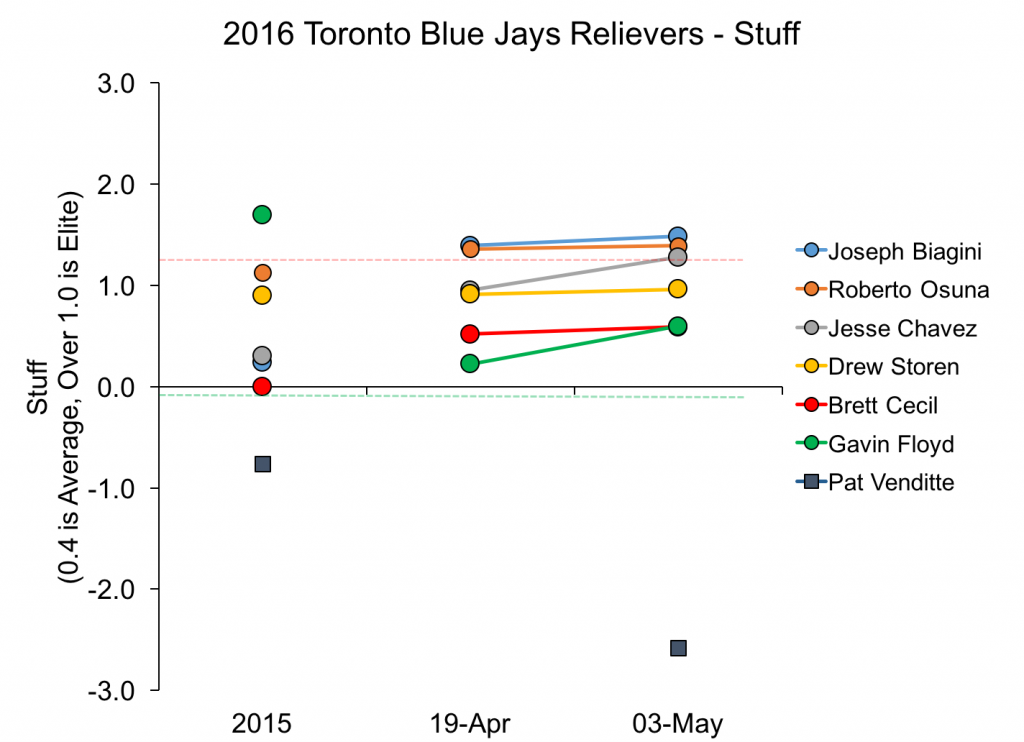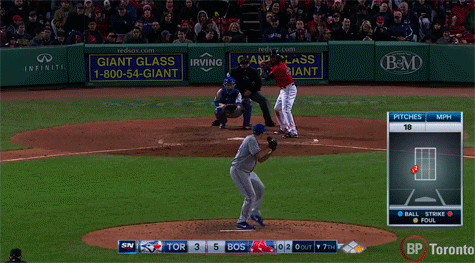The Blue Jays Stuff Report will be appearing in this space every two weeks. The metric was created by Dr. Mike Sonne, who has a PhD in biomechanics from McMaster University. For his work on pitcher fatigue, injury, and other baseball related research, please visit his website over at www.mikesonne.ca.
Welcome back to the Stuff report! As mentioned previously, the statistic is a measure of how a pitcher’s velocity, change in velocity, and amount of break help them perform on the field (Stuff has shown to be significantly correlated with both K/9, WAR, and xFIP/ERA). The benefit of using the Stuff metric, is that you could theoretically look at a pitcher’s arsenal in a bullpen session, and with the use of radar guns and spin trackers, calculate how their good their stuff is without needing to see a hitter swing. This has implications for both scouting and rehabilitation.
At BP Toronto, I’m calculating Stuff for all of the Jays pitchers, every 2 weeks, over the course of the season. If you’d like to read a primer on how Stuff is calculated, check out Volume 1. Once again I have included the raw stuff score, so you can see what they look like, as well as how that scone ranks across baseball. Not that we have all the housekeeping out of the way, let’s get to the results:
Blue Jays Starters
I’d personally like to welcome Drew Hutchison to the Stuff report, whose debut numbers are right in line with the Stuff he had during the 2015 season. That could be a good, or a bad thing, but it will be interesting to see how that plays out should he be recalled at any point. The biggest change in stuff between Volume 1 of the Stuff report and Volume 2 belongs to Marcus Stroman. Stro’s stuff was down in Volume 1 compared to 2015, but has jumped up big time after his Sunday start. This can be attributed to adding nearly 5″ of break between his fastball and curveball. Not surprisingly, Stro had a massive 8IP, 9K performance against the Rays. Finally, Aaron Sanchez’s Stuff continues to get better. His stuff value has now surpassed 2.0, which houses only the most elite of pitchers. When your stuff is that good, you can really make some hitters look foolish.
Blue Jays Relievers
Nearly every Jays’ reliever has seen a slight increase in their stuff over the past two weeks, even if the results haven’t exactly been there. Hopefully this is a sign that a breakout is on the horizon, and the Toronto bullpen is going to finally start pitching up to expectations. The pen’s best stuff belongs to Joe Biagini – buoyed by a massive amount of separation between his breaking pitches and his fastball. This type of stuff could keep the Rule V pick around all season, and potentially see him take on a larger role as the season progresses.
As for the rest of the pen, Roberto Osuna and Jesse Chavez are also still showing excellent stuff, with a nice boost for Chavez. However, the biggest increase in stuff belongs to Gavin Floyd. Even though his Stuff is worse than it was in 2015, Floyd is making nice strides which is key, seeing as he is such an important weapon for John Gibbons.
You’ll also notice that Venditte scores all the way down at the bottom, but that’s because he, like the knuckleballing Dickey, breaks the stuff metric. As he throws with both arms, the break on Venditte’s pitches cancel each other out, and it appears as though all of his pitched are flat, when in reality that is not at all the case. It’s pretty funny that there are three pitchers in baseball for whom “stuff” does not really apply (Steven Wright is the third), and the Blue Jays have two of them.
Overall, the Stuff trends for the Blue Jays pitching staff show some encouraging signs. Hopefully this means the bullpen is about to rid themselves of their early season woes, and that the starters will continue their excellence.






What about separate calculations for Venditte R and L, basically treating him as two pitchers? I’d be interested to see the difference.
That would be a good way to look at him more effectively. However, his outputs from fangraphs don’t quite break down that way. I will say – his stuff will come out a lot better, but will still be pretty low – he doesn’t have much in the way of velocity, and the pitch breakdown is pretty one sided.